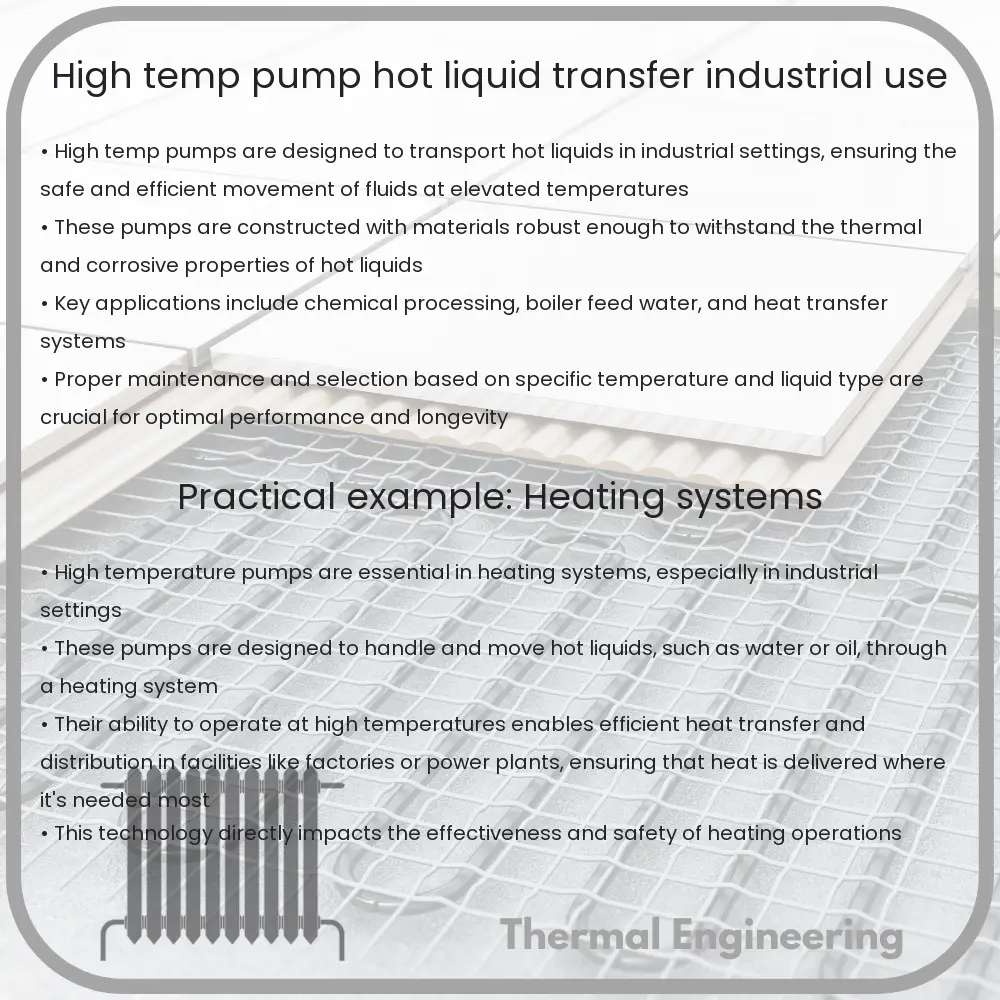Learn about high temperature pumps, their designs, applications, and key features for transferring hot liquids in various industries.

Understanding High Temperature Pumps for Hot Liquid Transfer in Industry
High temperature pumps are essential devices in many industrial processes where hot liquids need to be moved from one place to another. These pumps are specially designed to handle the rigors of high heat environments, transferring fluids such as molten salt, hot oil, and high-temperature water without degradation of the pump’s components. This article explores how these pumps work, their designs, and the applications they serve in various industries.
Types of High Temperature Pumps
- Centrifugal Pumps: These are the most common type of high temperature pumps, using a rotating impeller to move liquid. Suitable for applications with large flow rates and moderate to low viscosity fluids.
- Positive Displacement Pumps: Gear pumps, screw pumps, and rotary lobe pumps fall under this category. They are preferred for high viscosity fluids or when a precise volume of fluid is needed.
- Magnetic Drive Pumps: These pumps utilize a magnetic coupling that transfers torque without direct contact, which minimizes the risk of leaks. Ideal for handling hazardous or corrosive high temperature fluids.
Key Design Features of High Temp Pumps
High temperature pumps incorporate several design features to withstand the harsh conditions in which they operate:
- Material Selection: Components are typically made of materials that can endure high temperatures, such as stainless steel, titanium, and high-grade alloys.
- Cooling Mechanisms: Many high temperature pumps include cooling systems to help maintain a safe operating temperature and prolong the lifespan of the pump.
- Sealing Solutions: Advanced sealing technologies prevent fluid leaks, critical in maintaining the safety and efficiency of the system, especially in pumps handling hot, hazardous liquids.
Applications of High Temperature Pumps in Industry
High temperature pumps find applications across a broad range of industries due to their ability to deal effectively with high heat and caustic materials:
- Chemical Processing: Transfers high temperature fluids that are part of production processes, including acids, bases, and solvents.
- Power Generation: Used in geothermal, nuclear, and coal-fired power plants to circulate hot water and steam.
- Oil and Gas: Facilitates the movement of hot oils and other fluids in refining and processing applications.
- Food and Beverage: Handles the transfer of hot oils and fluids used in cooking and processing applications.
Conclusion
Understanding how high temperature pumps operate and the pivotal role they play in industrial settings is crucial for engineers and technicians working in these environments. With their specialized designs and robust construction, high temperature pumps are indispensable in safely managing the transfer of hot liquids in numerous industrial scenarios. Choosing the right pump type and maintaining it properly ensures efficiency, safety, and longevity in any high-temperature application.